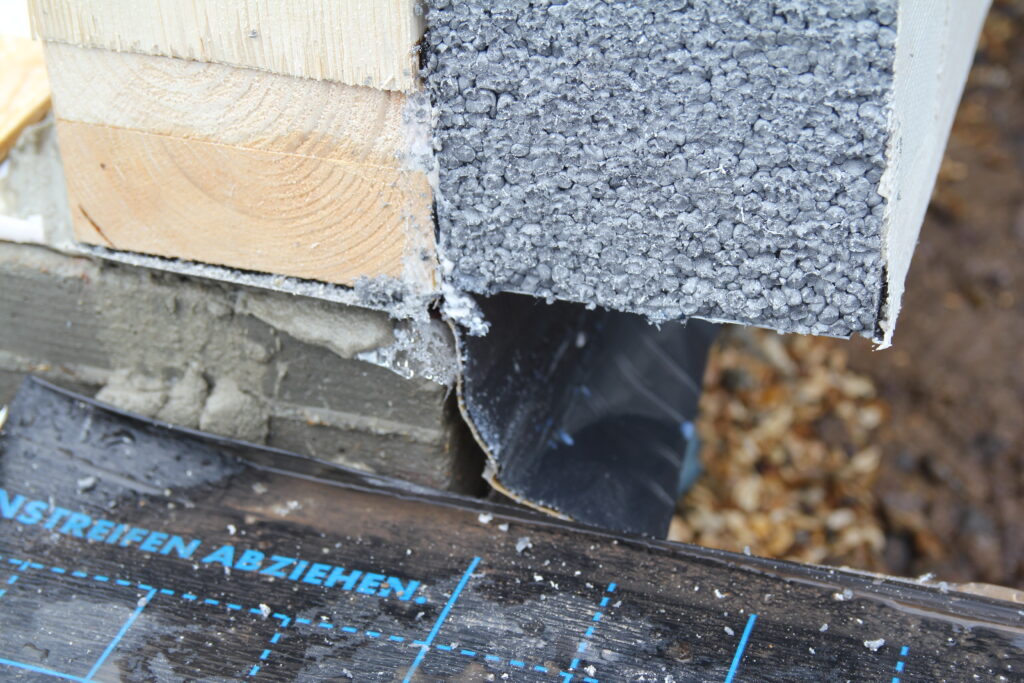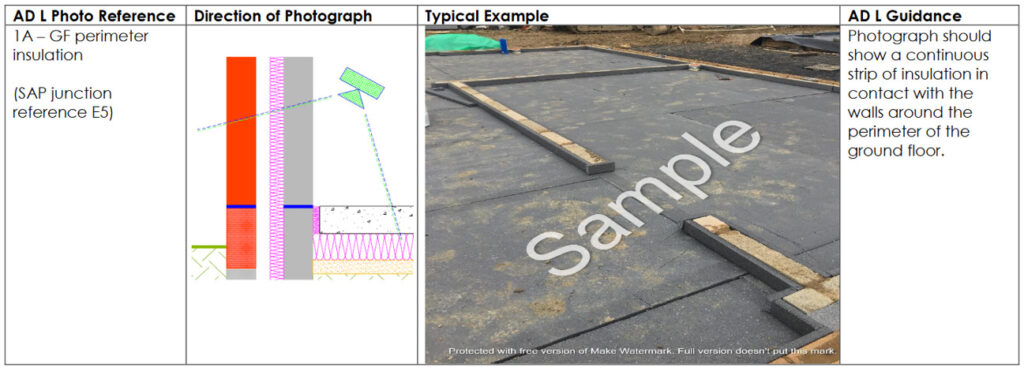Strict new EPC photographic evidence requirements were introduced for all new homes in June 2022.
The changes relate to the Part L Changes we saw in 2022 regarding the evidence needed to issue an as-built SAP assessment and EPC. This is the most significant change to Part L and energy assessments that we’ve seen during our tenure.
Until very recently, signed paperwork has sufficed to confirm most of the details informing an EPC. Currently almost all items which go into producing an assessment such as insulation levels, heating and cooling, lighting and thermal bridging details are self-declared by the developer.
As an enforcement body, Building Control ultimately have responsibility to check that these declarations are accurate. However, this is poorly understood and many Building Control bodies are not aware of these responsibilities. The new Part L document tells us that energy assessors will for the first time need photographs of the buildings during construction from the design team before they can produce as built assessments.
This requires photographs taken by the developer during the build, evidencing the correct installation of insulation, HVAC and lighting.
Why are things changing?
Studies have found that real world energy consumption can be 5 to 10 times higher than compliance calculations carried out during the projects design stage. This is known in the industry as the ‘performance gap’.
Although occupant behaviour is a contributing factor to this, discrepancies between declared specification and the quality of works as built are regularly identified as significant contributing factors. Grenfell and subsequent inquires have tragically highlighted the way that the requirements of Building Regulations often fall through gaps in communication and in the rigour of checking compliance. It will ultimately by subsequent owners left with the burden of retrofitting these mistakes, at far greater expense than the initial outlay would have been.
We need to get serious about carbon – half of our emissions come from buildings. There are no routes to zero carbon which do not involve dramatically reducing the energy demand of buildings, both existing and new, within the immediate future.

An example of photo evidence requirements for perimeter floor insulation
What needs to be photographed?
Photographs will need to be provided showing that the correct work has been undertaken around a range of building features which dramatically impact the homes energy demand.
Sets of photographs need to be taken which are unique to each property. For example, in a block of flats or row of houses, one set for every plot is needed rather than a sample. The following list is copied verbatim from the new Part L document:
1. Foundations/substructure and ground floor, to show thermal continuity and quality of insulation in the following places:
a. At ground floor perimeter edge insulation.
b. At external door threshold.
c. Below damp-proof course on external walls.
2. External walls: for each main wall type, to show thermal continuity and quality of insulation for the following.
a. Ground floor to wall junction.
b. Structural penetrating elements.
3. Roof: for each main roof type, to show thermal continuity and quality of insulation at the following.
a. Joist/rafter level.
b. Eaves and gable edges.
4. Openings: for each opening type (one image per wall or roof type is sufficient), to show thermal continuity and quality of insulation with photographs of the following:
a. Window positioning in relation to cavity closer or insulation line.
b. External doorset positioning in relation to cavity closer or insulation line
5. Airtightness: additional photographs for all details 1–4 to show airtightness details (only if not included or visible in continuity of insulation image).
6. Building services: for all plant associated with space heating, hot water, ventilation and low or zero carbon technology equipment within or on the building, show the following:
a. Plant/equipment identification label(s), including make/model and serial number.
b. Primary pipework continuity of insulation.
c. Mechanical ventilation ductwork continuity of insulation (for duct sections outside the thermal envelope).
What should the photos look like?
The Part L document tells us that:
- Photographs should be of good enough quality that an independent auditor can look at them and verify what is being shown without ever having been to site or worked on the project. More than one image of each detail may be needed, i.e. close ups and the whole item.
- Geo-location should be enabled to confirm the location, date and time of each image. This is a key requirement which we think will catch a lot of people out. Most smart phones have this feature but it’s often not switched on by default.

An example of photo requirements for ductwork insulation
What else is needed?
As before, the following will still be required before as built calculations can be produced:
- MCS certificates for renewables
- Air test certificates
- Signed statement of the as built specification
- U-value calculations for walls, floors, roofs.
Would you like to discuss your project?
Call us on 0330 055 34 05 or email be@buildenergy.co.uk.
